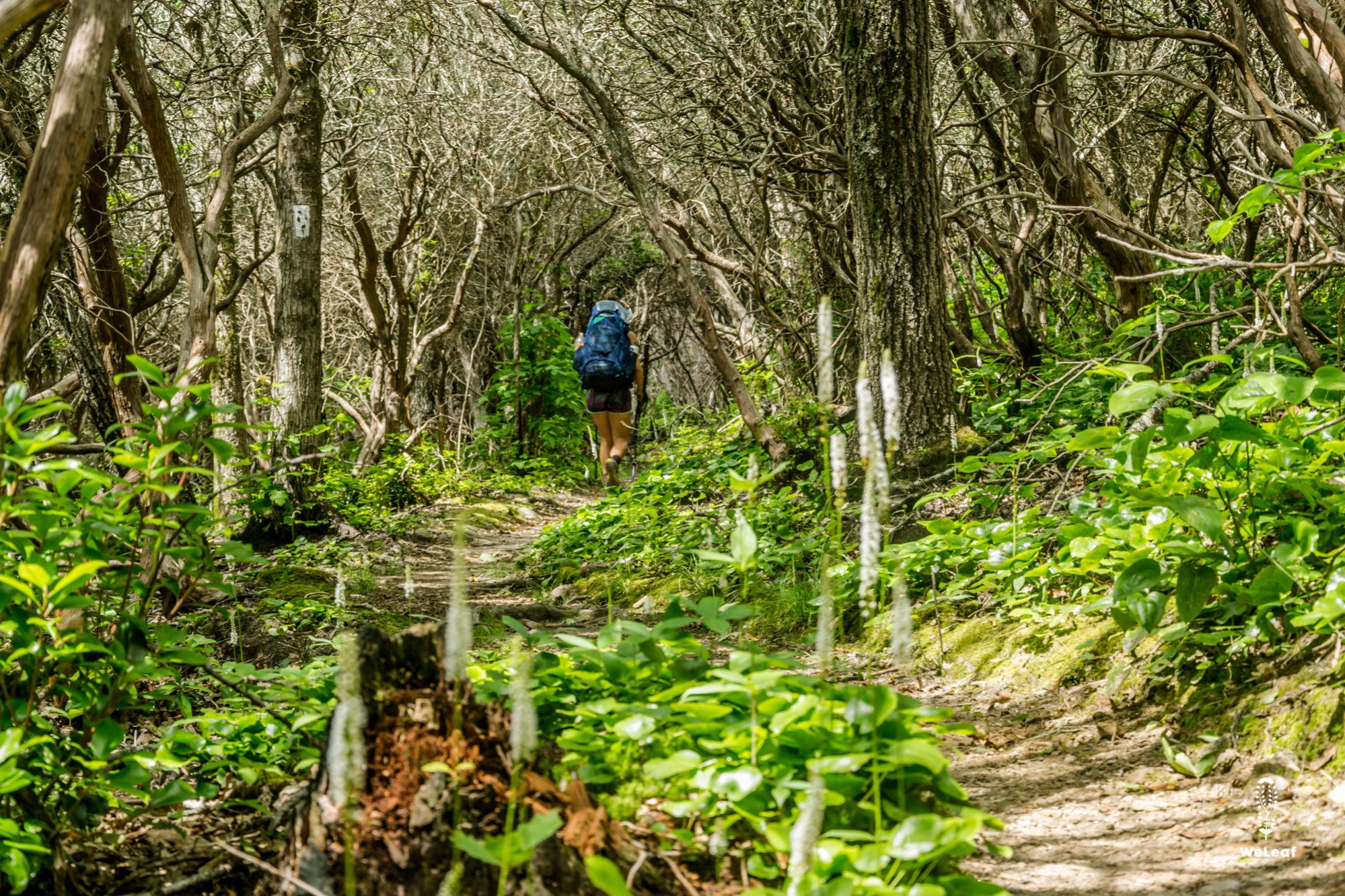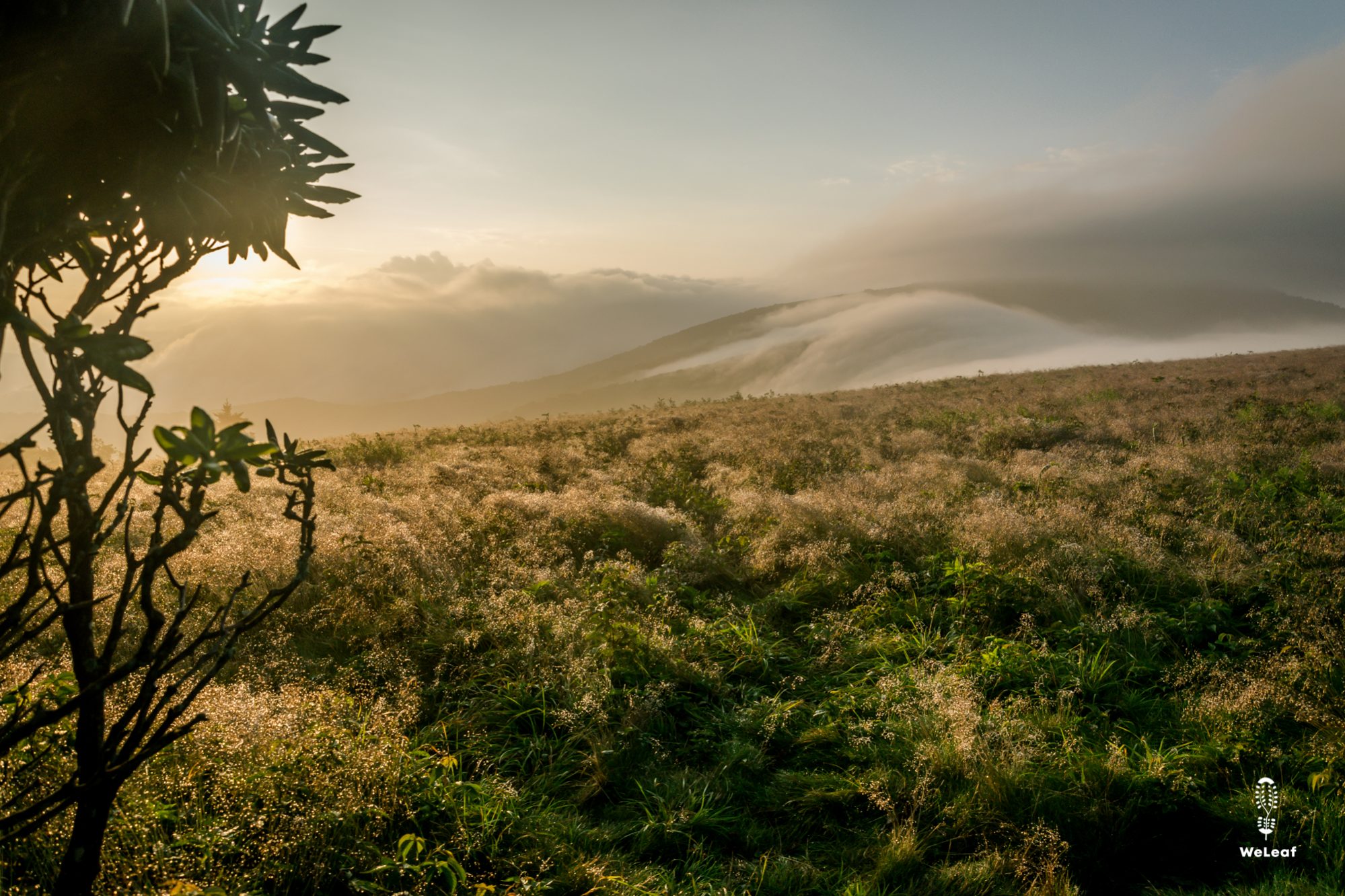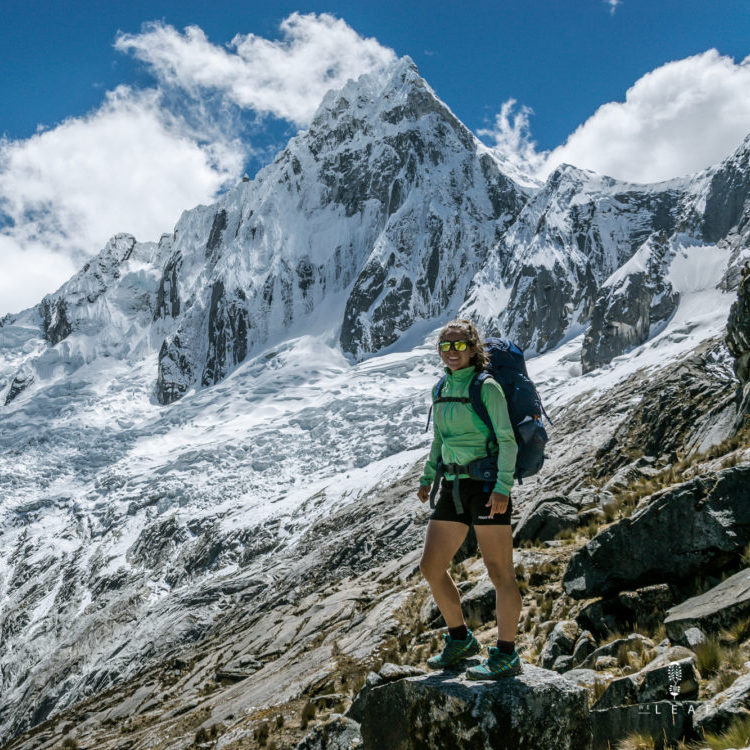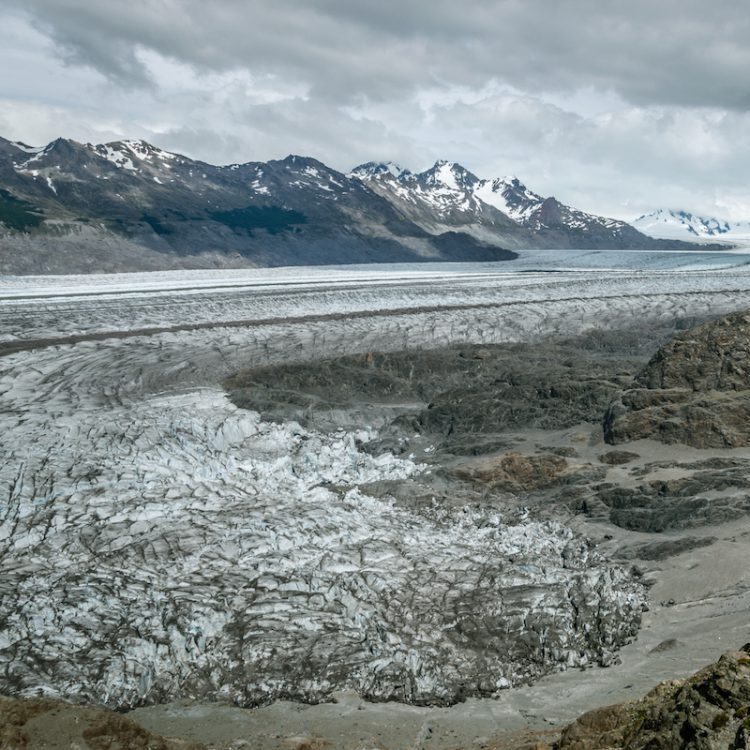
The Northern Forest Canoe Trail
January 13, 2020
The turkey is cooked
January 21, 2020Hiking the Appalachian Trail
The Appalachian Trail is perhaps the most famous long-distance trek in the world. Every year, almost 4,000 hikers try to hike the entire Appalachian Trail in one go, a thru-hike. That is a huge challenge that takes four to six months to cover the 3,500 kilometers. The majority of hikers do not do a thru-hike, but walk short sections of the trail. There are around 2 million people on the trail every year. The summer months are the most popular because people have vacation and it is an ideal time to explore the AT.
The idea of the Appalachian Trail originated in 1921, but it took until 1937 before the trail was completed. Until the 90's there was little attention for the trail, but thru-hiking has become hugely popular in the last twenty years.
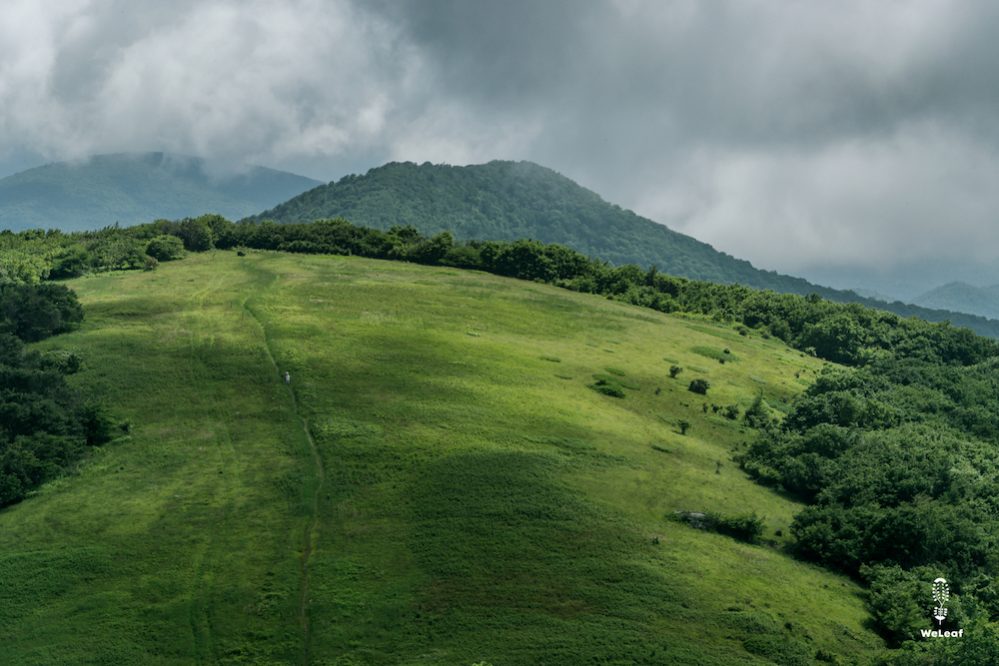
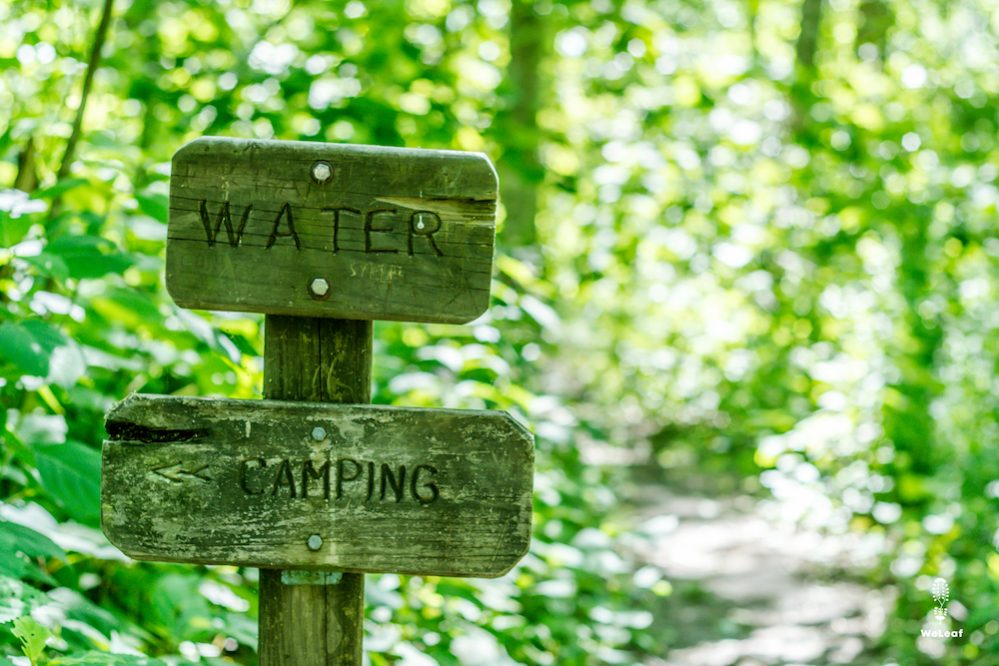
De Appalachian National Scenic Trail
The total Appalachian Trail is approximately 3,500 kilometers (2,200 miles) and runs from the southern terminus in Springer Mountain, Georgia to the northern terminus on Mount Katahdin in Maine. Due to small annual changes to the route, the total distance is not exact. Most of the thru-hikers start at Springer Mountain, while a smaller group starts at Mount Katadhin. Ze heten North bounders and South Bounders, beter bekend als NoBo and SoBo.
The entire Appalachian Trail is marked with white stripes on trees and stones, the "white blazes". There are an estimated 165,000 white blazes on the entire route. The entire trail is described as the largest volunteer project in the world. More than 6,000 volunteers maintain the entire trail, from painting the white blazes to creating drainage systems and removing fallen trees. Every kilometer of the trail receives almost a hundred hours of volunteer work every year, an insane number.
Due to the popularity of the trail, a lot of information can be found on the internet and in books. Thirty years ago you would start the trail full of question and surprises, but nowadays you know exactly what you will find with the help of a guidebook. This makes planning very simple, both with regard to food and sleeping places. We used the The A.T. Guide 2019 Northbound which perfectly describes the route, sleeping places, water facilities, altitude profile and villages. The book becomes your bible along the way that you will study several times a day.
We hiked 1,000 kilometers on the Appalachian Trail, from Springer Mountain to Paerisburg in Virginia. You walk through the beautiful mountains in northern Georgia, through the Smokey Mountains and the highlands in Virginia.
Sleeping
There are more than 250 shelters on the Appalachian Trail. It is possible to sleep in a shelter almost every night, but the question is whether you really want that. You are often not the only one and the sound of the air mattress or a snoring hiker thoroughly disrupt your sleep. The shelters are nevertheless ideal places to plan your day distance. A shelter almost always has a source or a stream to wash yourself and refill your water. There are often bear cables or a bear box to safely store your food and there are several places to pitch the tent. Most shelters are made for 6 to 10 people, although there are a few exceptions such as the Fontana Dam Shelter which is nicknamed Fontana Hilton. More than 20 people can sleep and there is a free shower.
In addition to the shelters, there are thousands of campsites on the trail. Most places are indicated in the guidebook, but you will regularly see a place that is not in the guidebook. Try only to camp at pre-existing places to not damage more nature. Make sure you always leave the campsite better than your found is and think of the leave-no-trace principle. Do you doubt between a hammock or a tent on the Appalachian Trail? For the trail we had a lightweight North Face Talus 2 tent. We hesitated for a long time between our Amazonas hammock and the tent, but ultimately opted for the tent.
You will occasionally have to leave the trail for a supply. Those are ideal moments to sleep in a bed, shower and wash your clothes. The trail goes through a number of villages, but most villages are a few miles off the trail. You will have to hitchhike to the village or arrange a shuttle. Many hostels offer a free pick-up if you stay overnight.
One of the most famous trail towns is Damascus in Virginia, where the trail days take place annually. Then thousands of hikers gather in the small village. In Damascus there are several options for sleeping. Two that we can recommend are the Old Mills Inn and the Hikers Inn, operated by Paul, a Belgian who moved to the US and did a thru-hike himself.
Food and water on a long trek
A major difference between the Appalachian Trail and the Pacific Crest Trail, its west coast counterpart, is the availability of water. The Appalachians get a lot of rain, resulting in green nature and enough water. It is not necessary to carry liters of water with you because you come across water sources several times a day. A number of water sources will dry out in the summer, but this is clearly indicated in the guidebook.
The AT runs through the mountains and often crosses the peaks. At this altitude there is little agriculture and no people living so the water is pure and fresh. We never filtered our water, only if we were closer to agriculture or civilisation.
You will have to carry the food yourself on the trail. There are enough villages along the way to resupply, but going off the trail takes time. We usually carried food for five days, which is a nice balance between weight and going off the trail. Our food bag is usually heavy because we want to eat healthy and bring fresh vegetables. Read our 7 tips for healthy eating on a long trek here.
The villages are ideal places to eat some extra calories. Sometimes the hostels offer breakfast and there are always restaurants. In the south there are a number of All You Can Eat pizza restaurants where you can eat as much as you want for just $8, a dream for a hiker. We found a handy list of all AYCE places on the entire AT.
Some of the town on the trail, like Fontana Dam and Hot Springs, are very small and only have an expensive general store. We sent ourselves some maildrops with food to the post offices in these town. The US Post service has a flat rate box that allows you to fill a box as full as you can for a fixed rate of $20. Our box was filled with nuts, dried fruit, peanut butter, granola bars, oats, etc. The AT Guidebook explains very well how to sent the maildrops to a post office, hostel or outfitter.
Weather on the AT
The Appalachians are green thanks to the rain. In the summer months it rains less, but you can always expect rain. The rain can be very heavy, so that entire parts of the trail turn into small rivers. We use ponchos to keep us dry during a rain shower. This ventilates much better than a raincoat so you sweat less. It is one of our ten tips for a long hike.
The summer months are warm with the chance of a thunderstorm in the evening. The advantage is that you don't have to bring much warm clothing, so you can go really lightweight. In the Smokey Mountains it can be cooler at night, but it was always hot on the other parts of the trail. Especially in the south it can get very hot in July and August.
Warm weather is always accompanied by mosquitoes and other insects. On certain parts of the trail we were particularly troubled by millions of small flies circling around your head. They have various names like gnats and black fly. They tend to fly in your eye and they ruin the quiet evenings at the campsite. Only when the sun goes down and the temperature drops a little, they disappear.
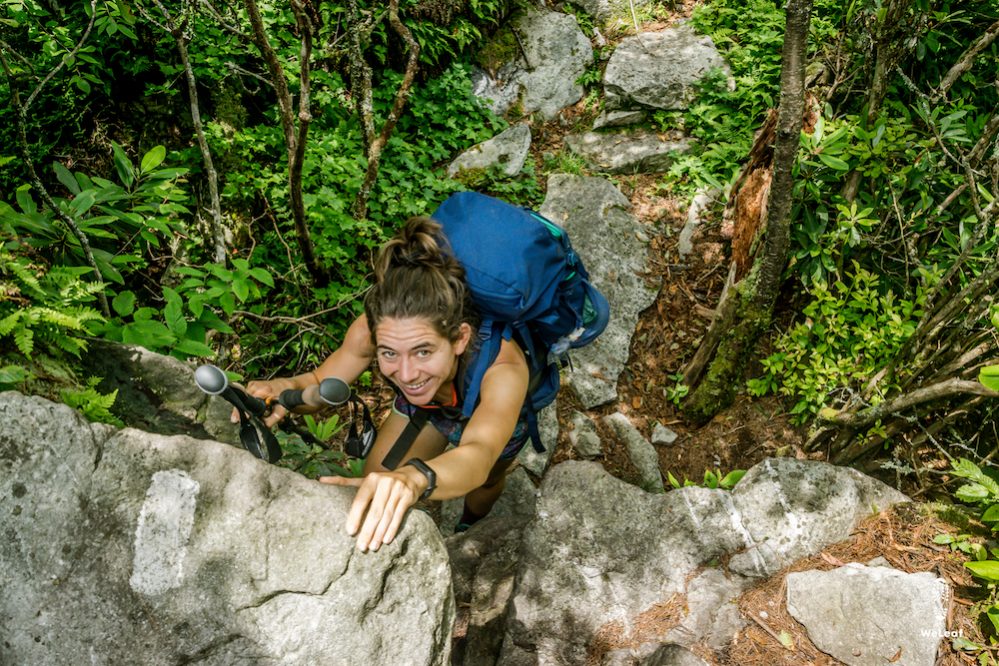
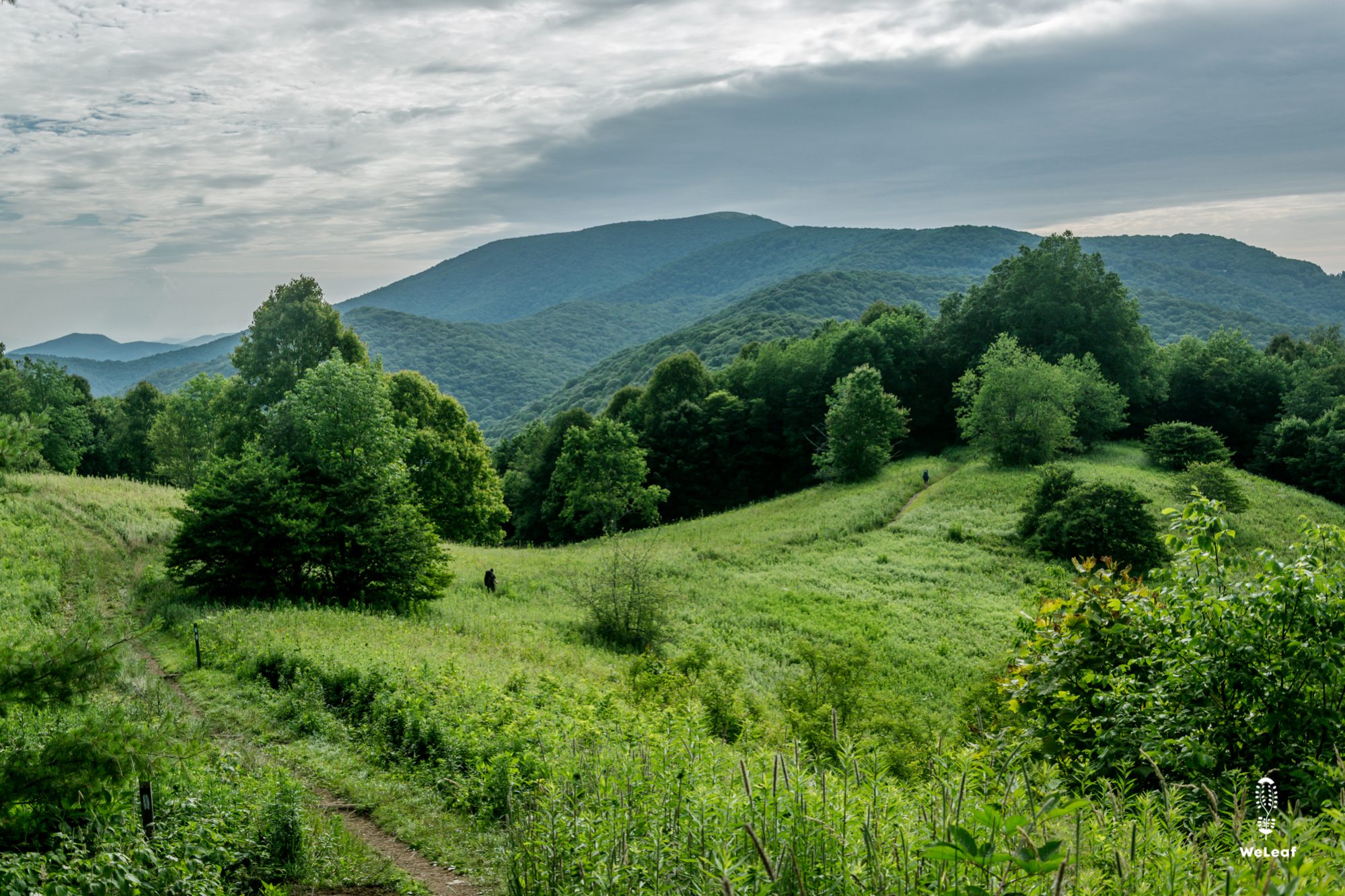
Wild animals on the AT
The forests are full of bushes and leafs during the summer months. Seeing wild animals is difficult, but if you're lucky you'll see a deer, wild boar or a bear. The Smokey Mountains in particular are ideal for seeing wildlife. We saw several deer and wild boar there. On the other hand, there is an abundance of insects, salamanders and snakes to be seen during the summer months. We saw beautiful red salamanders, speckled yellow caterpillars, black snakes and even turtles on the trail. There are two types of poisonous snakes, copperheads and rattlesnakes.
You will have to hang your food at night to protect it against the bears. The bears have learned that they can easily find food at the shelters and are no longer afraid of the hikers. At the shelters there are often bear cables, but at the other campsites you will have to make a bear cable with rope. We have hung our food safely in the tree every day and luckily never had a problem.
Personal care on a long trek
The summer months are warm and you will sweat a lot. Or you can get a heavy rain shower and everything gets soaked. The first thing we do in the evening is wash in a river or a spring, and we put a set of clean clothes on. We saw plenty of other hikers who did not do this and had many problems with chafing. We regularly washed out our clothes in the river, not so much for the smell, but mainly because sweaty clothes become stiff with salt. Discover our other tips for a long hike.
Olivier started the trek without hiking sticks, but got an inflammation in his knee after five days. A trail angel gave Olivier a few sticks, but it took more than two weeks before the inflammation was really over. Hiking sticks reduce 15-20% of the impact on your joints. There are often long descends where the knees and bones are heavily tested. Hiking sticks are then a blessing for your body.
Gear list
Discover our complete gear list for a hiking trip.
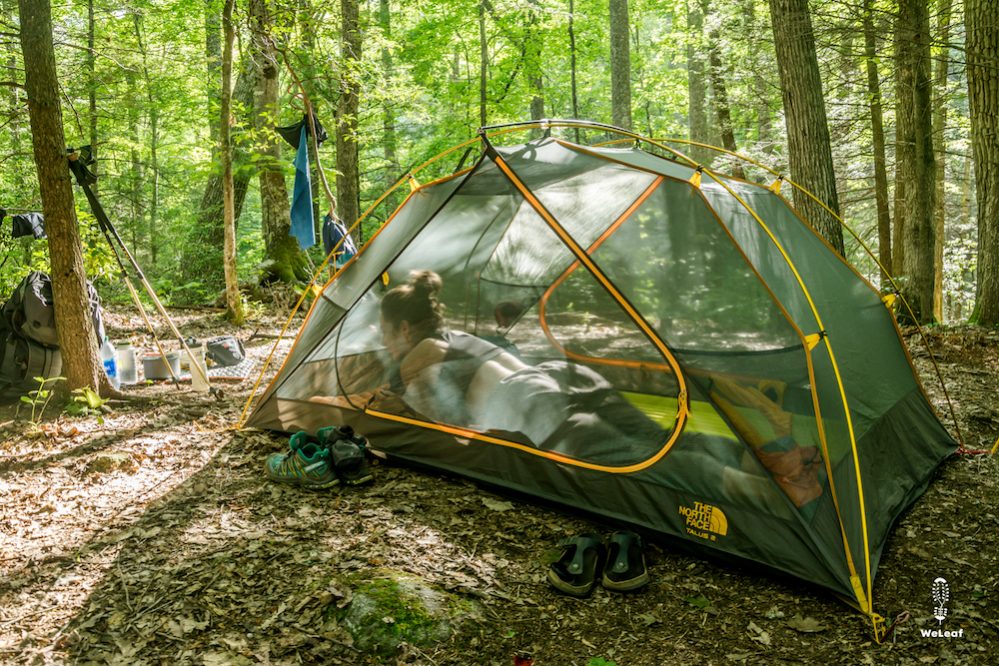
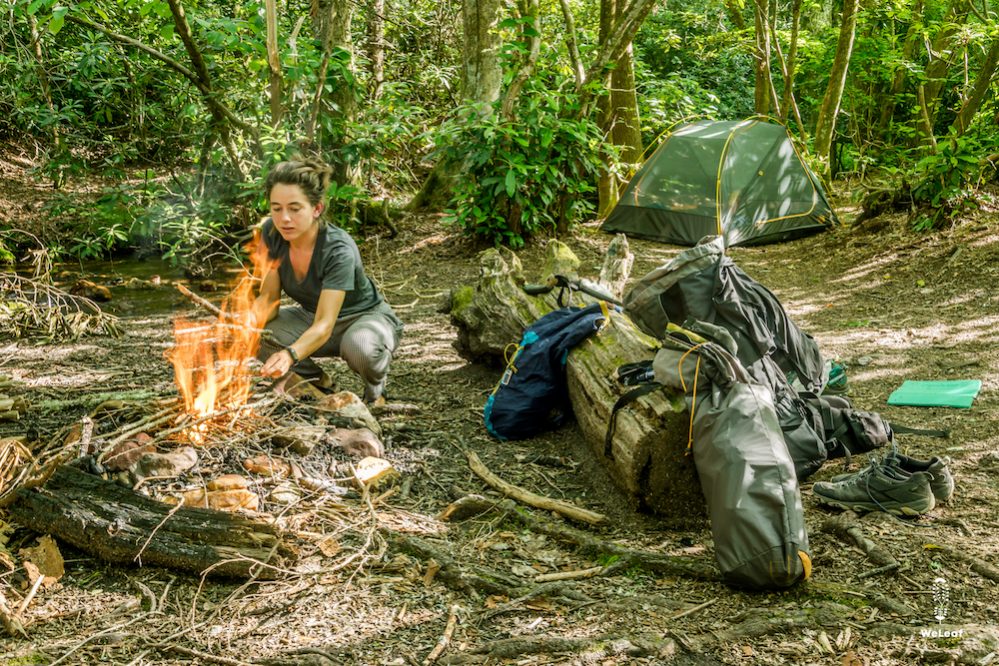
To the trailhead in Springer Mountain
The start of the AT in Springer Mountain is only accessible by private transport. The nearest major road is more than half an hour from the starting point and the last kilometers are on unpaved roads. It is one of the reasons why almost everyone starts at the Amicalola Falls which is easier to reach. You will also receive a number at the visitor center, you can weigh your bag and you will receive essential trail information. It is then approximately 13 kilometers to the official start following the approach trail.
The easiest way to get to Amicalola falls is by public transport and a shuttle service. From the Atlante airport you can jump on an Amtrak train or the Greyhound bus which brings you to Gainesville, the nearest city. From there there are many shuttle services to the Amicalola Falls.
Good to know
Trail Angels: The Appalachian Trail is known for its Trail Angels, people who volunteer to help hikers with food, a shelter or a lift. Especially when the large group of thru-hikers comes by, many trail angels are active. Local churches often make free breakfast for all hikers. We came across our own trail angels who all helped us to complete the 1,000 kilometers. There is one golden rule "don't expect help, but the trail will always bring what you need."
Ice Cream Challenge: Halfway the Appalachian Trail there is a fun challenge, the ice cream challenge. The goal is to eat half a gallon, about 1.8 liters, of ice cream. You can choose the flavour yourself and there is no time limit. The record is less than three minutes, but you don't want to break that. The halfway point is in the Pine Grove State Park in Pennsylvannia.
